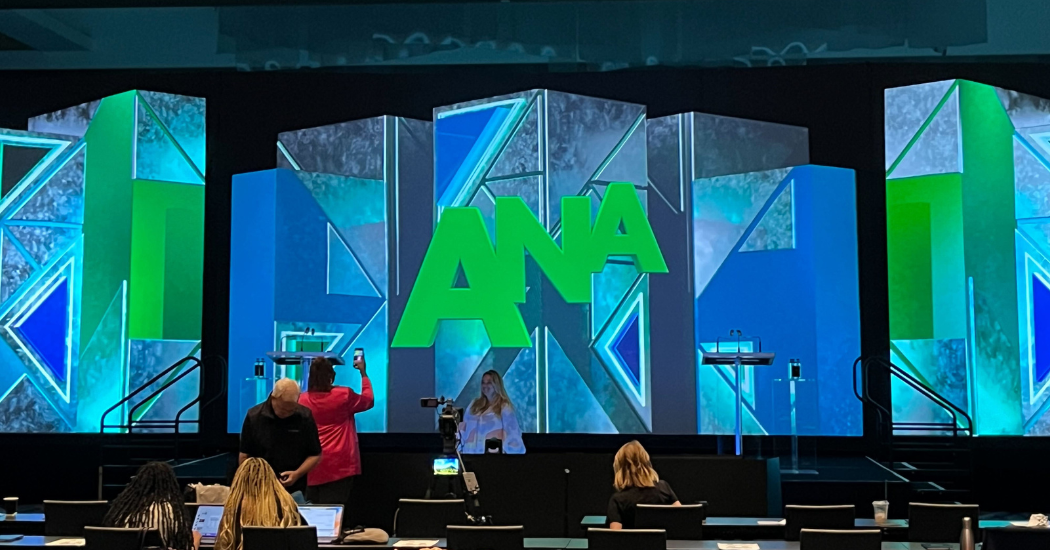ANA Digital & Social Media Conference Recap

Rain the Growth Agency was on-hand for the ANA 2024 Digital & Social Media conference in Los Angeles, California. The conference covered many topics while generally focusing on how to unlock brand growth through digital and social media. Two relevant themes that continually came up throughout the week from brand marketers, adtech experts and publishers were the growth and impact of influencers and content creators, and connected TV (CTV).
Building an Influencer Strategy for Growth
According to Gabe Alonso, Vice President of Integrated Marketing & Experiences at El Pollo Loco, more than ever before, consumers look to creators and influencers for guidance. Based on research from Edelman Trust Barometer and Mintel, 61% of U.S. consumers follow influencers. 63% trust those creators more than the brands themselves. Those are powerful findings. To reinforce them, consider that 82% of consumers have purchased or considered purchasing a product after seeing an influencer post about it.
So how does a brand build an influencer strategy that propels their business forward?
According to Manscaped’s CMO Marcelo Kertesz, “Culture is a mess today. It’s everything everywhere all at once, which makes it very difficult to cut through as a brand.”
Content creators allow brands to tap into things like consumer trust and purchase consideration, but also other factors like cultural relevance and trends that spur engagement. Creators make it possible for brands to create meaningful impact with consumers in a way that other paid channels cannot achieve.
There are many factors to consider when getting started, as discussed during the event:
- Should a brand engage micro vs. macro influencers?
- What is the measurement strategy for influencers and how does it align to broader measurement goals?
- Are brand exclusivity rights gained in the partnership?
- How are brand/creator relationships forged?
Influencer strategies require resources and attention to detail to be executed effectively. Aligning to creator profile categories and building a stringent briefing process can create structure for creator programs. Working with an experienced digital agency can help you identify and engage in creator opportunities that allow for added impact.
Creator programs can also add value in unforeseen ways. They can quickly alleviate media production costs when the content is utilized directly by the brand. Creators can also spur transactions directly in the likes of TikTok Shops and Meta when enabled.
These programs should at minimum be considered by all brands given the multitude of entry points to create added impact in the social platforms that consumers spend so much time in already.
CTV Impact and Growth
CTV, or connected television, continues to not only see continued growth and investment, it also continues to drive outsized impact on brand awareness and purchase intent. According to Lumen TVision, CTV carries the highest average attentive seconds as measured across all available media channels.
CTV plans can be developed for both brand and performance outcomes – and Rain the Growth Agency has proven success for both paths, coupled or decoupled.
The vast majority of CTV is being activated via programmatic platforms. ANA’s CEO Bob Liodice, and Group EVP, Bill Duggan, shared their thoughts on programmatic trends and considerations:
- According to their research, 84% of all nonsearch digital placements are being activated programmatically today, and CTV isn’t an outlier. It’s critical to get programmatic right if brands expect to win in the CTV space.
- Programmatic activation presents pitfalls that must be considered. Those include open web activations, non-working media costs (data fees, measurability, loss of media productivity), plus other factors like data quality and strategy.
- In 2024, brand campaigns are still tapping into an average of more 44,000 sites to reach its end audience. Open marketplaces are often over- utilized and MFA sites are too widely available as inventory sources for brands.
- When advertisers work with agency teams, they should have a well-defined point of view on ad quality and price relative to desired media outcomes. Their strategy should align on measurability, technology capabilities and log-level data for performance analysis and optimization.
This article is featured in Media Impact Report No. 57. View the full report here.
